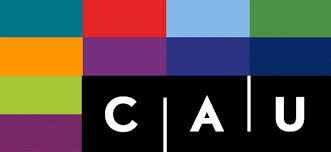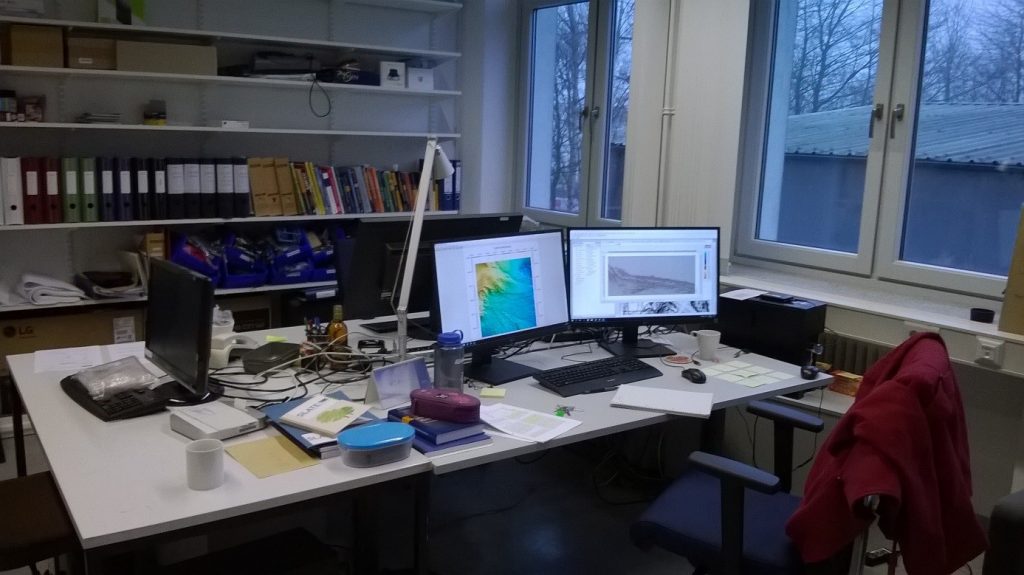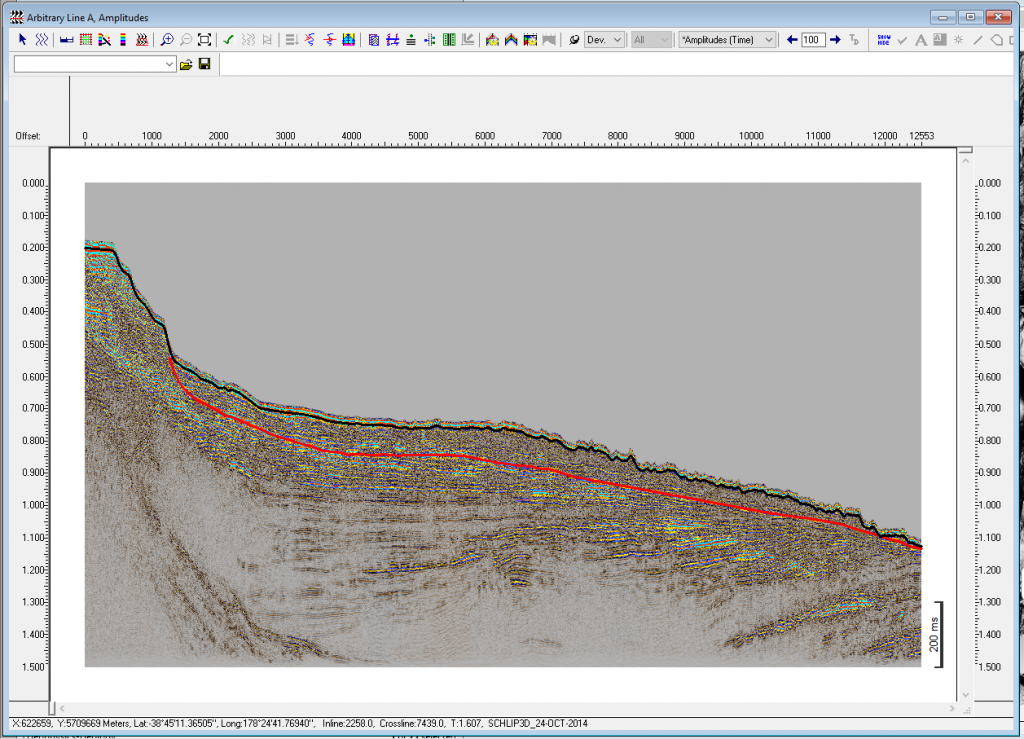Monika Wiebe’s secondment at Christian-Albrechts-Universität (CAU), Kiel, Germany
Monika Wiebe, ESR 11 | 15-26/01/2018
The European training network SLATE brings together young scientists that are focused on studying submarine landslides, which are underwater mass movements. We use different methods to dig deeper into the questions of why, how and when landslides happen. My preferred method is numerical modelling in which I use computer programs to rebuild an underwater slope. Then I run a number of tests to figure out what makes this slope unstable and eventually break. The goal of this approach is to draw conclusions for landslides in general.
At the moment, my focus is on one particular landslide – the Tuaheni landslide complex offshore of the North Island of New Zealand. This landslide is ideal for my purposes because it is probably the best studied landslide in recent years. This provides me with all the data I need to set up my model. My second supervisor Prof. Dr. Sebastian Krastel from CAU, Kiel, and his working group have acquired a 3D seismic cube that covers large parts of the Tuaheni landslide. Seismics allows us to look into the deeper parts of the subsurface; it reveals the existence and location of stratigraphic layers and other features, e.g. gas pockets or faults.
In January, I went to CAU in Kiel so that I could get familiar with this data set. I met with Dr. Felix Gross who is experienced in interpreting seismic data and knows the 3D cube very well. He helped me to understand what the seismic data tells me about the slope, e.g. which are the different layers, and how to recognise faults and gas. This information is essential to set up my model in a realistic way.
I also had the chance to meet other colleagues and have valuable discussions with them: Dr. Gareth Cruchtley from GNS Science, New Zealand, and Christoph Böttner from Geomar, Kiel, have both been working on the Tuaheni landslide complex. They could give me more insight into their research and results, and ideas for my own project.
Overall I really enjoyed my stay in Kiel, although I did not get to see much of the city itself due to the short time (and the almost constant grey sky and fog). I felt very welcome in Sebastian Krastel’s working group and enjoyed meeting the other colleagues there and having lunch together. Not to mention that the cafeteria has some of the best coffee I’ve ever tasted!
I went back to Bremen with a hard drive of seismic data and a much clearer picture of the Tuaheni landslide in my mind. This will enable me to take the next step and set up the model geometry. I am very grateful to Sebastian Krastel for inviting me and especially to Felix Gross for all the help with the 3D cube.
- 15-26/02/2018



